What Is Hair Density And How To Measure It?
Everything you need to know about the concept and strategies for measuring hair density.
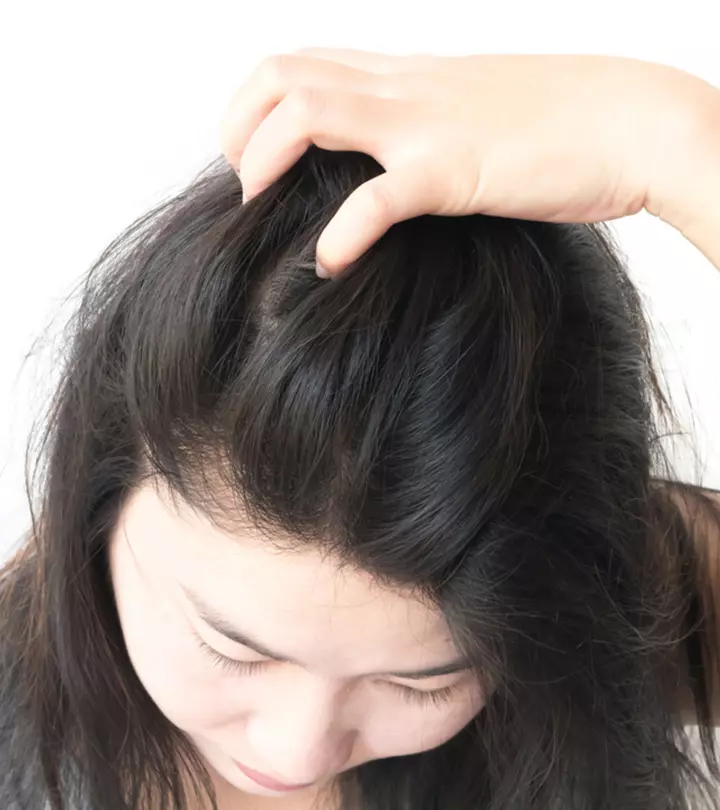
Image: ShutterStock
It is needless to say that our hair defines our look, at least to some extent. A good hair density is what everyone wishes to have, be it a man or a woman.

Is hair density and hair thickness are the same? If not, how do they differ? This article answers all these queries besides looking into the reasons behind low hair density, how to increase it, and if shaving the hair helps in this regard. Let us get started.
In This Article
What Is Hair Density?
Hair density
refers to the number of strands that grow per square inch on your scalp. It can vary during your life, changing over the course of years and through adulthood.
Before you jump to find out how to determine hair density, note that the human head has more than 100,000 strands of hair on average (1).
Seeing the sheer amount of strands on the human head, it must be tempting to know what your hair density is. Find out how you can measure your hair density below.
Key Takeaways
- Hair density refers to the number of hair strands per square inch on an individual’s scalp.
- You can use various methods such as counting the number of strands per square inch or checking your scalp visibility.
- Factors such as genetics, hormones, age, and stress can contribute to low hair density.
- Individuals with low density can opt for bobs and layers to create an illusion of fullness and volume.
Is There A Way To Measure Hair Density?
Accurate measurement of the density of your hair requires help and technical intervention.
Even then, the determined density is not permanent. Since the different areas of your scalp exhibit varied characteristics, the density may differ (2).
The two most seemingly accessible ways that can help you measure hair density are:
1. Count
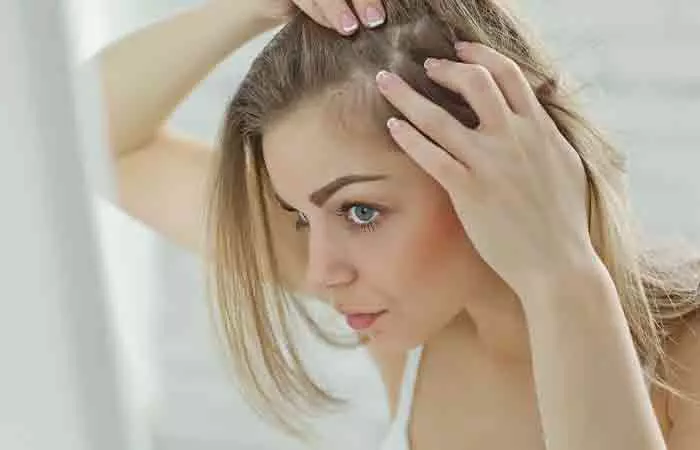
This method is more of an estimate rather than a tiresome activity. Simply count the number of strands on a square inch patch of your scalp and multiply it by the number of square inches on your scalp. Note that the average number of strands of hair on one square inch of scalp varies between 124 and 200 (3).
2. Scalp Visual
Hair count method can be quite time-consuming, so another way to determine your hair density is by looking at your scalp.
- If you can see your scalp easily, you can assume that it has a low hair density.
- If you can see your scalp, but not too clearly, you may assume it to be medium hair density.
- If it is hard to spot your scalp, consider it to have high hair density.
The above-mentioned methods are not absolute, nor are they the gold standard. For accurate calculations, clinical aestheticians and doctors use computerized methods, involving a dermatoscope which are also being improved for efficiency.
 Quick Tip
Quick TipIf you find that you have low hair density, it will be beneficial to know its reasons.
What Are The Reasons Behind Low Hair Density?
The human body is made up of numerous chemical combinations. Each characteristic is attained naturally, and some are acquired from the environment you grow in. A few of the most common causes of low hair density are:
1. Genetics
Genes determine various components of your hair, skin, and body – right from your skin color to the pigments in your hair. If your parents had finer and less dense hair, chances are you will too. If they had a denser growth, you are more likely to as well.
2. Age
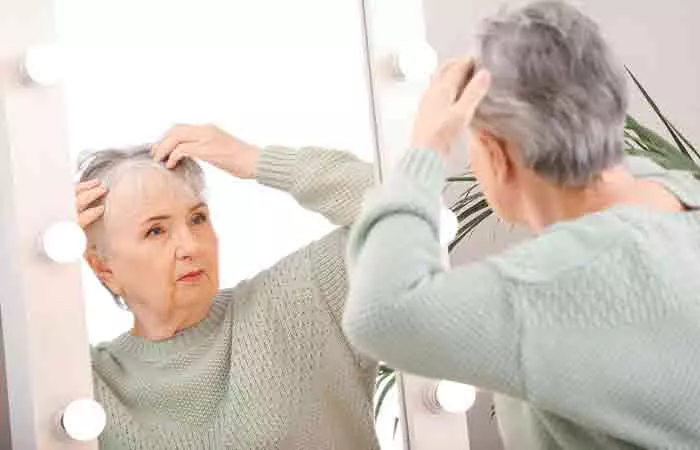
It is natural for your hair growth to reduce with age. Multiple studies have found that hair density peaks at around 27 years and begins to decrease after the mid-thirties. As you grow older, your hair follicles – which are the roots of hair strands – slow down in their cycles of growing new hair every time it falls. Eventually, they stop growing new hair altogether (4).
3. Hormones
Hormonal imbalances
caused by hypothyroidismi A condition in which the thyroid gland produces an inadequate amount of the thyroid hormone, causing metabolic problems. , hyperthyroidismi A condition in which the thyroid gland secretes excessive amounts of the thyroid hormone, speeding up the body's metabolism. , PCOSi Polycystic Ovary Syndrome is a hormonal condition that results in enlarged ovaries with tiny cysts and abnormal levels of androgens, male sex hormones. , and other health conditions are commonly known to cause hair loss (5).
4. Nutrition

A healthy diet is essential for healthy-looking hair and skin. Deficiencies in vitamins and minerals can show up as changes in your scalp, which can cause hair loss (6).
5. Damage
Lowhairdensity
can occur due to improper handling of hair. This is also known as trauma alopecia. Hairdos that constantly pull your locks, harsh chemical relaxers and treatments, and exposure to high heat from styling tools can affect your hair density (5).
 Quick Tip
Quick Tip6. Stress
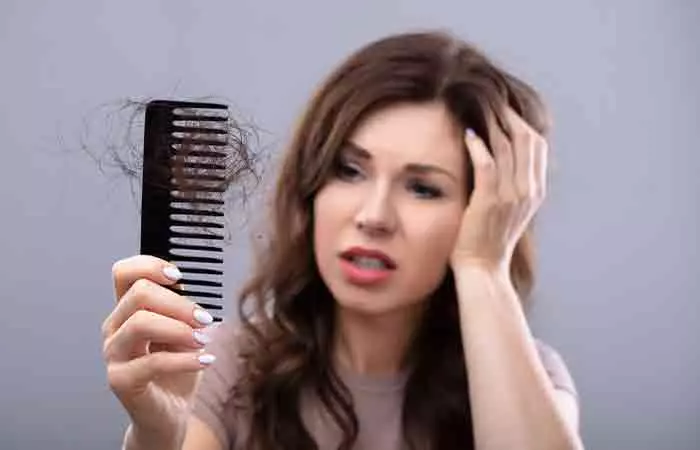
Stress has been known to induce hair loss. Thankfully, this is usually temporary, and normal hair growth continues with a new cycle. The only solution to this is stress management (7).
7. Side Effects Of Medication
Many drugs, such as cancer drugs, immunosuppressants, and beta-blockers, list hair loss as a side effect. Though not everyone experiences these side effects, if you notice a change in hair density after taking these medications, consult your physician about it (8).
Now that you are familiar with the causes and the exact meaning of hair density, you can try the right products and hairstyles that bring out your best! Below are some styling tips for people with different hair densities.
Styling Tips According To Hair Density
- Low Hair Density
Go for haircuts like bobs and layers. These create an illusion of fullness and a larger crown of hair. Use volumizing shampoos and ditch any chemical-rich serums and hair products. They can weigh your hair down, giving it a thinner look. If you want to know how to make your thin hair look thicker without using any hair volumizing products, just tease the roots with a tail comb to puff the hair up. However, there are many more ways that you can look into to get the desired look.
- Medium Hair Density
You can experiment with different hairstyles as your hair does not fall at either end of the spectrum. Based on how you choose to style your locks, you can use products that protect them from further damage.
- High Hair Density
Low layers and ’slicing’ haircuts work well for you. For you, choosing the right cut can be a little tricky. Your hair texture also makes a difference as curls are more likely to look larger if cut too short. Use products that weigh your hair down and nourish it well.
While knowing your hair density while picking a suitable hairstyle matters, knowing if your hair is thick is different. We assess the difference between hair density and hair thickness below.
Difference Between Hair Density And Hair Thickness
Hair thickness refers to the size of a strand in terms of diameter, which correlates to the size of the hair root or follicle. On the other hand, hair density is the number of hair strands on your head.
The thickness of your hair does not make a discernable impact on your overall appearance, but hair density does. As such, you should focus on increasing your hair density for a thicker, fuller crown.
Here are some ways to combat sparse hair growth and get high-density hair.
How Can You Increase The Density Of Your Hair?
1. Platelet-Rich Plasma (PRP) Treatment

In this treatment, platelet-rich plasma is derived from your blood and injected into specific areas of your scalp. This stimulates hair growth and reduces inflammation. The platelets contribute to hair growth as they are said to be rich in proteins (9).
2. Low Light (LLLT)
For this, red light therapy and cold laser are used to stimulate hair growth. This method is more convenient and claimed to have lower adverse effects than long-term evasive procedures (10).
3. Nutritional Supplements
Since poor nutrition plays a role in hair loss, you should take supplements if you do not hit the required daily intake for various nutrients and minerals. Supplements of omega 3 and 6 fatty acids have shown an improvement in hair quality and perceived growth (11). You can also consume amino acid and protein supplements.
A study evaluating the safety of low-dose oral minoxidil for hair loss involved 1404 patients– 943 women [67.2%] and 461 men [32.8%]. This study focused on the adverse effects oral supplements for hair loss might have on health. It was found that 15.1% of the patients experienced increased hair growth on different parts of their body, lightheadedness in 1.7%, accumulation of fluid in tissues and cavities in 1.3%, fast heart rate in 0.9%, headache in 0.4%, puffy eyes in 0.3%, and insomnia 0.2%. Therefore, it is best to get a professional consultation before taking any supplements.
If you feel that your hair density has reduced, consult your doctor about the above methods and pick one that suits your requirements. If you are curious to know about the possible natural ways to increase hair density, read on.
Natural Ways To Increase Hair Density
There are no natural ways to increase hair density. However, you can follow the tips mentioned below to support the treatments and maintain your hair health:
- Consume a balanced diet rich in proteins, vitamins, minerals, and essential fatty acids to support healthy hair growth.
- Try hot oil massages to enhance blood circulation in your scalp, promote hair follicle health. It is also one of the most potent ways to improve your hair texture.
- Engage in regular physical activity to improve blood circulation to the scalp.
- Practice yoga, meditation, or deep breathing exercises to minimize the impact of stress hormones on your hair health.
- Avoid tight hairstyles, heat styling, and harsh hair treatments that may damage hair follicles.
- Ensure you get sufficient sleep each night to allow the body to repair and rejuvenate, promoting overall hair health.
You can refer to a hair density chart for more efficient results.
What Is A Hair Density Chart?
If the methods mentioned above require too much of an effort, you can always switch to weaves. Weaves are hair extensions that add to you hair volume and length.
To figure out which weave suits you, you may refer to the hair density chart based on a standardized system, as listed below:
- 50% – Very thin and sparse. This is usually recommended for older people.
- 80% – A low hair density weave that shows the scalp easily.
- 100% – Most commonly selected and gives a natural look and feel.
- 120% – Slightly more than the natural look that is becoming increasingly popular.
- 130% – A moderate-density weave suited for people in their mid-20s.
- 150% – This is a highly dense weave and not commonly selected.
- 180% – Extremely dense; most weave makers do not recommend this unless required.
Not interested in a weave? Are you more inclined to conventional methods like shaving off your hair? Read on to know more about shaving your head to increase your hair density.
Can Shaving Your Hair Actually Increase Its Density?
The belief that hair density can improve if you shave your head is a myth! It merely gives that effect as the blunt (thick) ends of your hair start growing again from the roots. Shaving can give your locks a better feel, but do not be fooled. This is only because the new hair that grows is not as damaged from environmental exposure.
More importantly, shaving your hair cannot help with thickness. Hair thickness depends on the shaft composition and follicle size. Therefore, shaving your hair is not the best solution for low-density natural hair.
Infographic: 4 Major Causes Of Low Hair Density + Treatment Options
Our hair adds so much to our personality. However, several factors like stress and genetics can contribute to thinning hair. If you are struggling with low hair density caused by lifestyle factors, the good news is there are ways to increase it. The following infographic contains information about the top 4 reasons behind low hair density and ways to treat it. Check it out!
Some thing wrong with infographic shortcode. please verify shortcode syntaxThe human head has more than 100,000 strands. To check your hair density, you can either count the number of strands per square inch or check to see if you can see your scalp easily. If you have low density, it may be due to genetics, stress, or hormonal imbalance. You can try different looks and the right products to style your hair according to your hair density. You can also opt for medical treatment such as platelet-rich plasma therapy or nutritional supplements for increasing your hair density.
Frequently Asked Questions
What products are best for low hair density?
For people with low hair density, use volumizing shampoos and conditioners. Look for products with biotin and keratin, as they help strengthen hair and give it a fuller look without adding extra weight.
Is thick hair healthy?
Thick hair does not necessarily give a sign of good hair health. In fact, thick hair can be more prone to breakage.
Does thin hair mean balding?
Hair thinning does not necessarily mean that you are balding. However, the lower volume of hair does give the appearance of baldness.
Can you have thick hair but low density?
Yes, one can have thick hair but low density as hair thickness relates to the thickness of a single hair strand while density is the number of strands per square inch on the scalp.
Does longer hair look less dense?
Yes, longer hair may look less dense than medium or short hair as long hair weighs more which can pull down the hair, making it look less dense. To avoid this you can slightly cut your hair without losing much of your length to enhance the look of your hair.
Illustration: What Is Hair Density And How To Measure It?

Image: Stable Diffusion/StyleCraze Design Team
References
Articles on StyleCraze are backed by verified information from peer-reviewed and academic research papers, reputed organizations, research institutions, and medical associations to ensure accuracy and relevance. Read our editorial policy to learn more.
- Number of hairs on human head
https://bionumbers.hms.harvard.edu/bionumber.aspx?id=101509 - Parietal scalp is another affected area in female pattern hair loss: an analysis of hair density and hair diameter
https://www.ncbi.nlm.nih.gov/pmc/articles/PMC5749551/ - Distribution of human hair in follicular units. A mathematical model for estimating the donor size in follicular unit transplantation
https://pubmed.ncbi.nlm.nih.gov/10417585/ - The psychological and aesthetic impact of age‐related hair changes in females
https://onlinelibrary.wiley.com/doi/abs/10.1111/jocd.12960 - Hair Loss
https://www.health.harvard.edu/a_to_z/hair-loss-a-to-z - Nutrition and hair
https://www.sciencedirect.com/science/article/abs/pii/S0738081X10000623 - Hair and stress: A pilot study of hair and cytokine balance alteration in healthy young women under major exam stress
https://www.ncbi.nlm.nih.gov/pmc/articles/PMC5397031/ - Drug that Causes Hair Loss and Promotes Hair Growth-A Review
https://www.researchgate.net/publication/300852952_Drug_that_Causes_Hair_Loss_and_Promotes_Hair_Growth-A_Review - The Effect of Platelet-Rich Plasma in Hair Regrowth: A Randomized Placebo-Controlled Trial
https://www.ncbi.nlm.nih.gov/pmc/articles/PMC4622412/ - Low-Level Laser (Light) Therapy (LLLT) for Treatment of Hair Loss
https://www.ncbi.nlm.nih.gov/pmc/articles/PMC3944668/ - Effect of a nutritional supplement on hair loss in women
https://onlinelibrary.wiley.com/doi/abs/10.1111/jocd.12127
Read full bio of Dr. Shruti Chavan
Read full bio of Arshiya Syeda
Read full bio of Ramona Sinha
Read full bio of Medha Deb













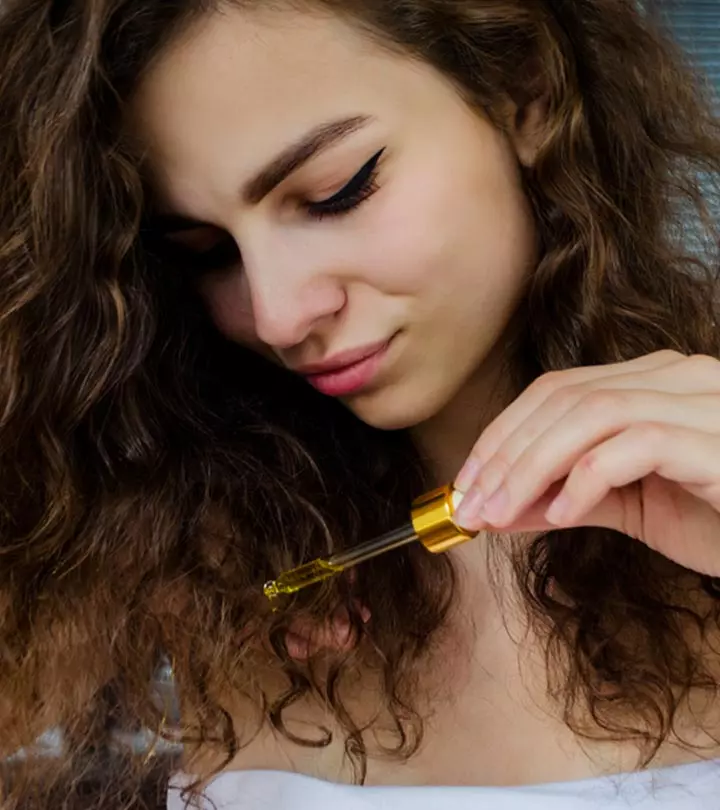
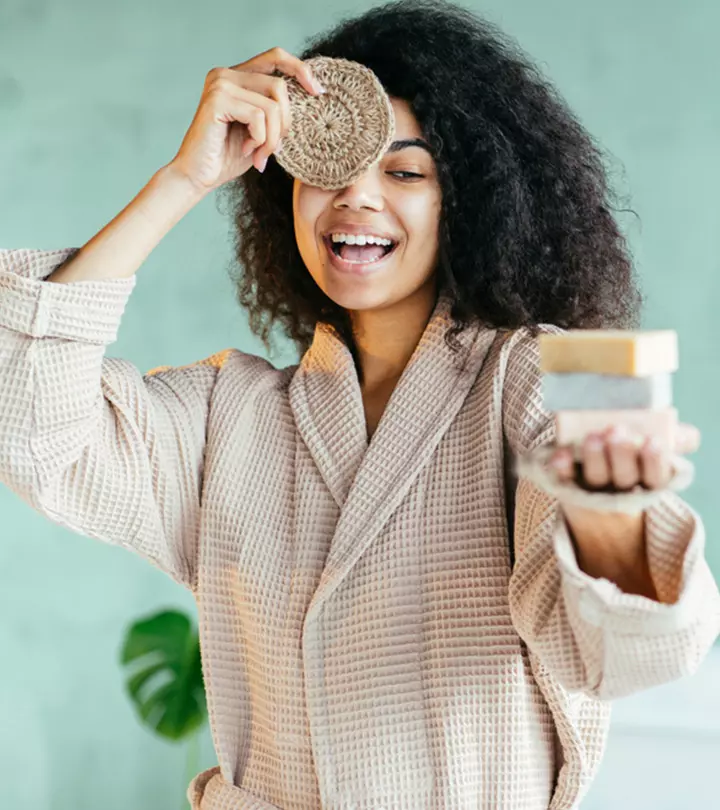

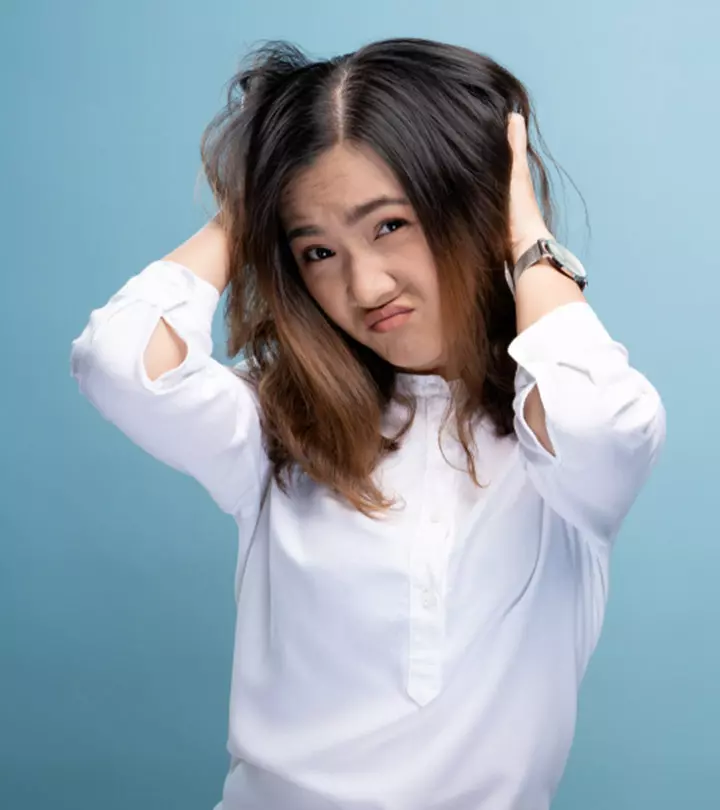



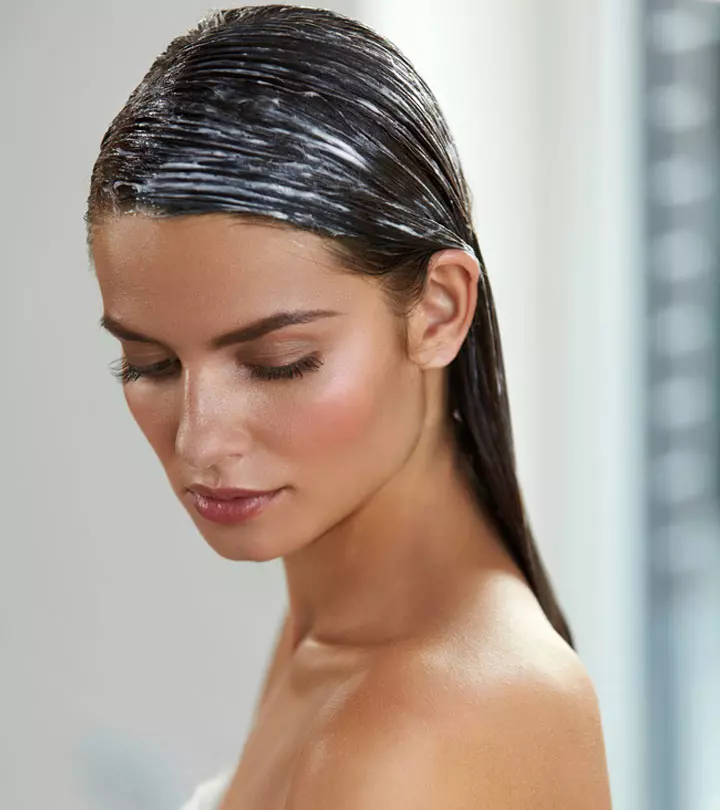
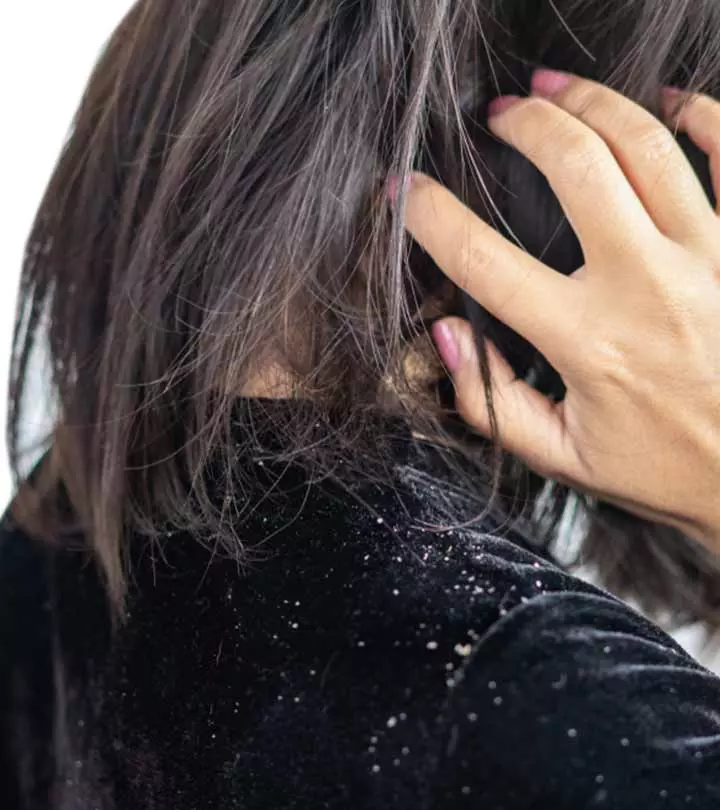





Community Experiences
Join the conversation and become a part of our empowering community! Share your stories, experiences, and insights to connect with other beauty, lifestyle, and health enthusiasts.